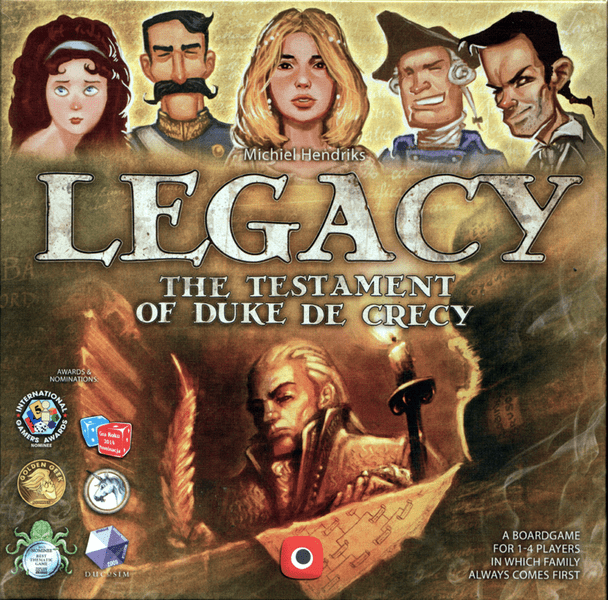Legacy: The Testament of Duke de Crecy (2013) Board Game
Legacy: The Testament of Duke de Crecy is a board game that was released in 2013 by Portal Games. Designed by Michiel Justin Elliott Hendriks, the game is set in the Age of Reason and revolves around players managing a noble family and their lineage. The game combines elements of card collection, economic strategy, and hand management to create a unique gaming experience.
Game Components of Legacy: The Testament of Duke de Crecy
How To Setup Legacy: The Testament of Duke de Crecy
To set up the game, place the main board in the middle of the table. Arrange three face-up Generation 1 Title cards to the left and three face-up Generation 1 Contribution cards to the right of the main board. Place the corresponding Generation 2 and 3 cards in piles next to their Generation 1 counterparts. Shuffle the Friend card deck and draw five face-up Friend cards, placing them in the indentations on the main board. Each player receives a player board and two Action Pawns.
Gameplay Mechanics and Game Objective
Player Experience
Playing **Legacy: The Testament of Duke de Crecy** is a challenging yet engaging experience. Players must manage their limited actions carefully to fulfill hints and build their family’s legacy. The game requires strategic thinking, especially in managing “known” family members and timing the placement of family members to gain specific benefits. In the multiplayer version, players compete to create the most influential family, while the solo variant involves researching a family tree to prove connections to a wealthy deceased person.
Pros
Cons
Personal Thoughts on Legacy: The Testament of Duke de Crecy
**Legacy: The Testament of Duke de Crecy** is ideal for fans of strategic, engine-building games who enjoy deep thematic immersion. It is particularly suited for players who appreciate games with complex mechanics and are willing to invest time in learning and mastering the rules. The game is not for casual gamers or those who prefer quick, simple gameplay. Instead, it caters to enthusiasts who relish in the challenge of building a lasting legacy over multiple generations.
We are supported by our audience. When you purchase through links on our site, we may earn an affiliate commission, at no extra cost for you. Learn more.

